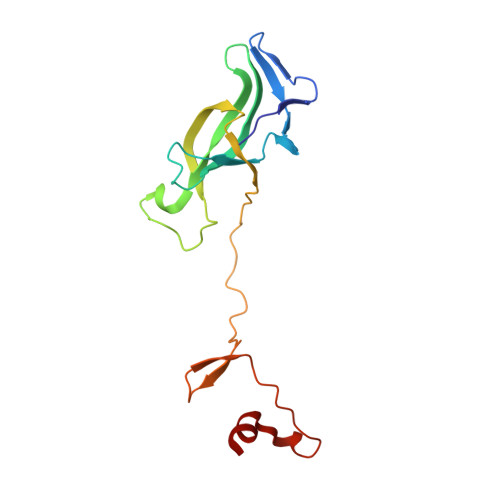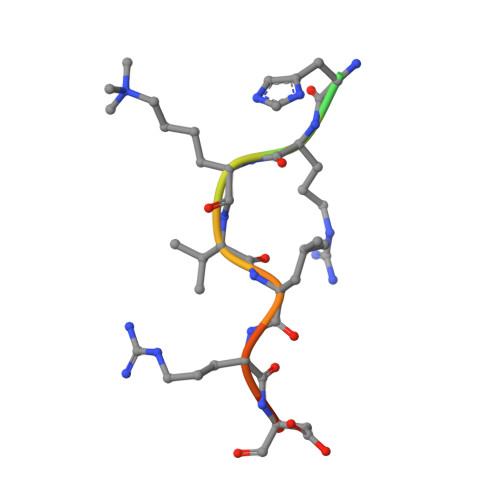DNMT1 reads heterochromatic H4K20me3 to reinforce LINE-1 DNA methylation.
Ren, W., Fan, H., Grimm, S.A., Kim, J.J., Li, L., Guo, Y., Petell, C.J., Tan, X.F., Zhang, Z.M., Coan, J.P., Yin, J., Kim, D.I., Gao, L., Cai, L., Khudaverdyan, N., Cetin, B., Patel, D.J., Wang, Y., Cui, Q., Strahl, B.D., Gozani, O., Miller, K.M., O'Leary, S.E., Wade, P.A., Wang, G.G., Song, J.(2021) Nat Commun 12: 2490-2490
- PubMed: 33941775
- DOI: https://doi.org/10.1038/s41467-021-22665-4
- Primary Citation of Related Structures:
7LMK, 7LMM - PubMed Abstract:
DNA methylation and trimethylated histone H4 Lysine 20 (H4K20me3) constitute two important heterochromatin-enriched marks that frequently cooperate in silencing repetitive elements of the mammalian genome. However, it remains elusive how these two chromatin modifications crosstalk. Here, we report that DNA methyltransferase 1 (DNMT1) specifically 'recognizes' H4K20me3 via its first bromo-adjacent-homology domain (DNMT1 BAH1 ). Engagement of DNMT1 BAH1 -H4K20me3 ensures heterochromatin targeting of DNMT1 and DNA methylation at LINE-1 retrotransposons, and cooperates with the previously reported readout of histone H3 tail modifications (i.e., H3K9me3 and H3 ubiquitylation) by the RFTS domain to allosterically regulate DNMT1's activity. Interplay between RFTS and BAH1 domains of DNMT1 profoundly impacts DNA methylation at both global and focal levels and genomic resistance to radiation-induced damage. Together, our study establishes a direct link between H4K20me3 and DNA methylation, providing a mechanism in which multivalent recognition of repressive histone modifications by DNMT1 ensures appropriate DNA methylation patterning and genomic stability.
Organizational Affiliation:
Department of Biochemistry, University of California, Riverside, CA, USA.
























